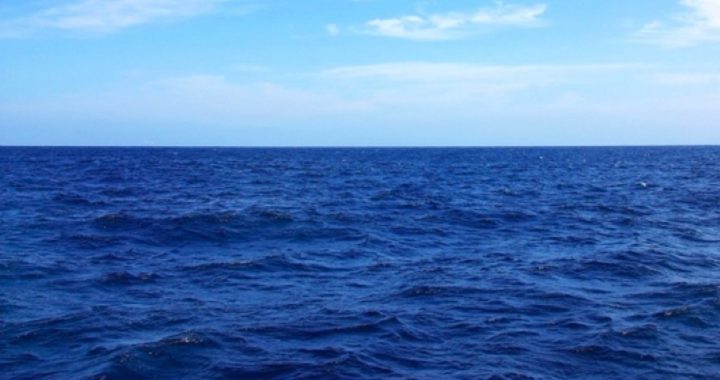
Environmentalists and their governmental counterparts throughout the United States and Canada are expressing their outrage and threatening legal action against a project undertaken in international waters that was intended to lower the level of carbon dioxide in the atmosphere and increase the population of salmon. At the heart of the controversy are the actions of the Haida Salmon Restoration Corporation (HSRC), which spread 100 tons of iron dust in the ocean with the intention of boosting the level of plankton in the surrounding sea water — and thus increasing the food available for the surrounding salmon population. In fact, the HSRC describes its project in terms of common land-based agricultural processes:
We create knowledge and foster understanding needed to practice stewardship of ocean pastures. Ocean pastures are much like pastures and ranges found on land; they are complex ecological communities of plants and animals however the “grass” of our ocean pasture is phyto-plankton.
The reaction to HSRC’s distribution of 100 tons of iron dust has been an explosion of ‘hot air.’ The New York Times, for example, railed against the project with a vehemence usually reserved for environmental ‘pariahs’ such as DDT and nuclear power. Under the headline, “A Rogue Climate Experiment Outrages Scientists,” reporter Henry Fountain fumed:
A California businessman chartered a fishing boat in July, loaded it with 100 tons of iron dust and cruised through Pacific waters off western Canada, spewing his cargo into the sea in an ecological experiment that has outraged scientists and government officials.
The entrepreneur, whose foray came to light only this week, even duped the National Oceanic and Atmospheric Administration in the United States into lending him ocean-monitoring buoys for the project.
Canada’s environment ministry says it is investigating the experiment, which was carried out with no government or scientific oversight. A spokesman said the ministry had warned the venture in advance that its plan would violate international agreements.
Inflammatory language about “spewing” iron dust aside, the outrage that somehow, somewhere a business might carry out its work without “government or scientific oversight” might seem humorous; however, the accusation of a violation of international agreements is more significant. The Times cited several individuals as it sought to make the case for HSRC having violated some aspect of international law:
But tampering with the environment is risky, they say, so any experiments must be carried out responsibly and transparently, with the involvement of the scientific community and proper governance.
“Geoengineering is extremely controversial,” said Andrew Parker, a fellow at the Belfer Center at the Kennedy School of Government at Harvard. “There is a need to protect the environment while making sure safe and legitimate research can go ahead.”
Mark L. Wells, a marine scientist at the University of Maine, said that what Mr. George did “could be described as ocean dumping.”
A story for CBC News reports that even Haida tribal leadership has distanced itself from the actions of Old Massett village:
“The consequences of tampering with nature at this scale are not predictable and pose unacceptable risks to the marine environment,” said [Haida Nation president] Guujaw in a statement issued on Thursday.
“Our people along with the rest of humanity depend on the oceans and cannot leave the fate of the oceans to the whim of the few,” he said.
Guujaw’s claims regarding the “scale” of the actions taken by HSRC appear to ignore the fact that the total quantities of iron distributed in the ocean amount to little more than a few iron filings in a very, very large “bucket.” A more relevant question might be what measurable effect the distribution of roughly 450 cubic yards of iron could possibly have on oceanic plankton populations, and what benefit would be directly derived by salmon from such an increase in population. The deliberate sinking of thousands of cubic yards of iron — in the form of decommissioned ships — has been praised as a great boon to the environment.
For all the puffery flowing forth from Canadian officials and the handwringing concerns of the environmentalists, the leaders of the Haida Salmon Restoration project are confident they have violated neither Canadian nor international law, as noted in an article for CBC News:
The project’s leader, John Disney, says the project took place outside of Canada’s 200-mile territorial limit, and was not large enough in scale to contravene international laws or UN agreements.
“We were outside Canadian waters, therefore we had to deal with a different set of rules and regulations and a different body,” Disney said.
“In the area we were operating, my lawyers have, Haida Salmon Restoration and the village council’s lawyers have looked extremely carefully at the international laws, and we’re fine, they cleared us.”
“They accessed all the UN documents, all the international marine law, and they went through that paragraph by paragraph and they said we were good to go.”
Arguably, what the Haida Salmon Restoration project has done is similar to the use of fertilizers on farmland: every year countless tons of fertilizers, insecticides, and other chemicals are sown or sprayed across the vast expanses of the farms all over the world, all aimed at changing the chemical or mineral composition of the soil, to limit the growth of unwanted species of plants, and eliminate harmful insects altogether — if possible. According to the New York Times article, George claims that his project has generated a “golden mountain” of data on the plankton boom which resulted from the distribution of iron dust. Be that as it may, George also admits that the total quantity of iron released into the ocean pales in comparison which that which is naturally released. And, of course, the release of iron from shipwrecks and manmade reefs is undoubtedly also a factor which would be more significant on a global scale.
HSRC’s great transgression — from the perspective of the environmentalists — is summarized in the words of oceanographer Victor Smetacek, who was quoted in the Times article:
Victor Smetacek … said Mr. George’s project would give a black eye to legitimate research.
“This kind of behavior is disastrous,” he said, describing Mr. George, with whom he had brief contact more than five years ago, as a “messing around, bumbling guy.”
In the aftermath of the Climategate debacle and other environmentalist fiascos in other years, those elements of government and the scientific community which have linked their careers to various aspects of the theory of manmade global warming have much bigger concerns where their legitimacy is concerned than one “bumbling guy” with a hundred tons of iron dust.
Related article:
Global Climate Warming Stopped 15 Years Ago, UK Met Office Admits


